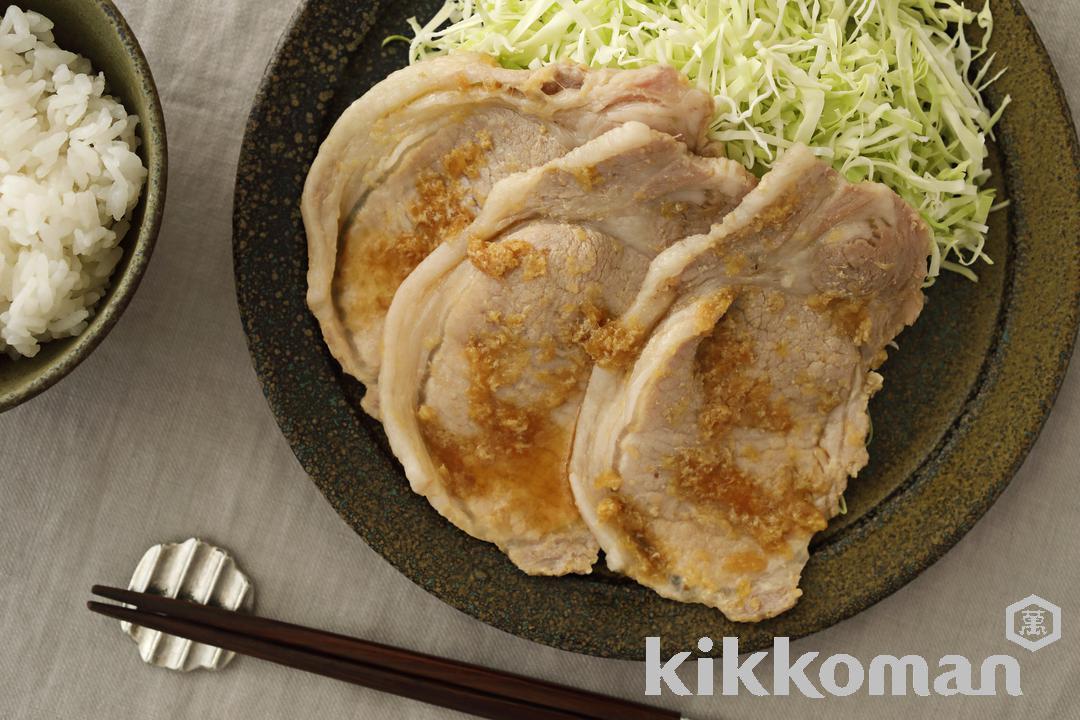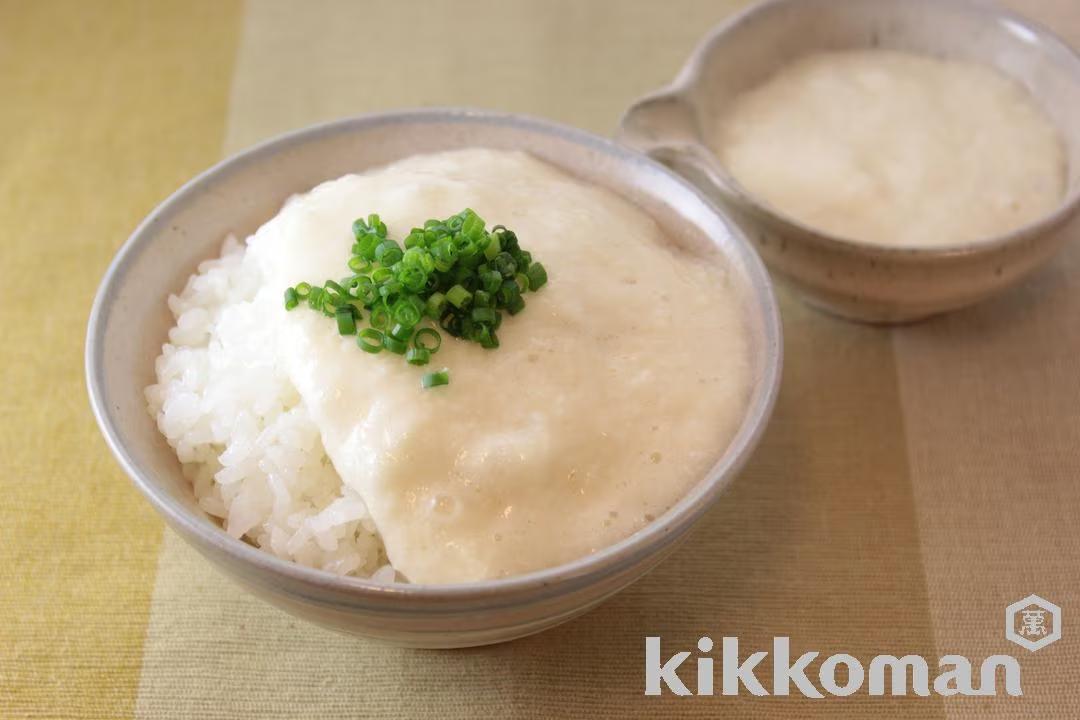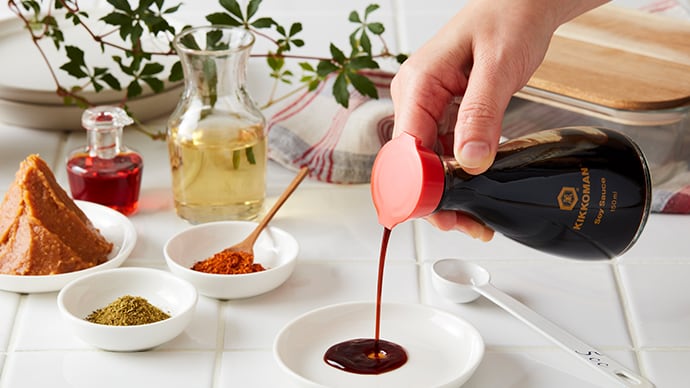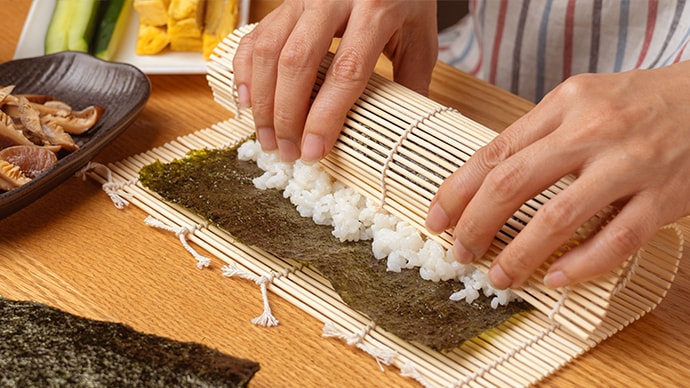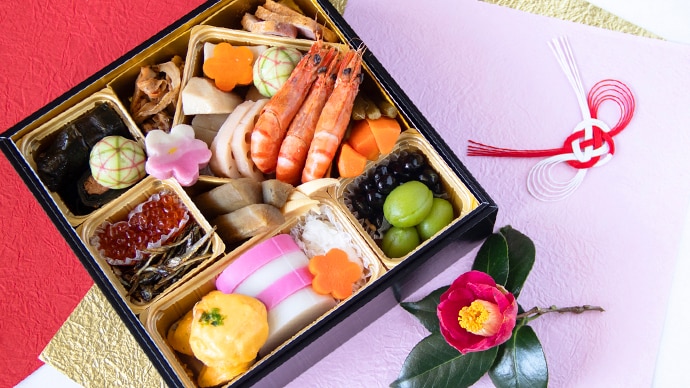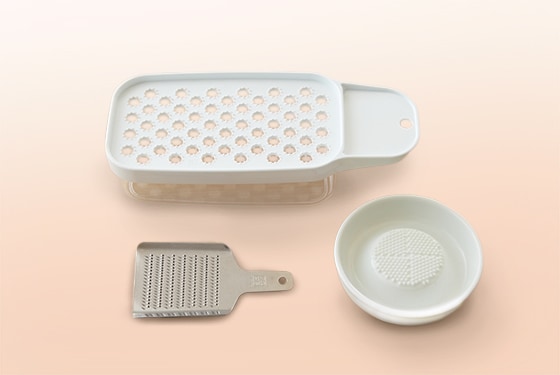
Kitchenware used in grating ingredients, primarily spices or vegetables in Japanese cuisine
What is grater?
Graters are a kitchen utensil used to grate food into smaller pieces. Outside of Japan, most are 4-faced metal graters used primarily to grate cheese. Japanese graters have a lot of small spikes on the surface made to grate spices like ginger or wasabi, or vegetables such as daikon radish or yamaimo (yam). Traditional Japanese graters were mostly made of metal in a dustpan shape, but now they come in various shapes and materials. There are box-shaped ones that hold grated ingredients, round ones, copper, stainless steel, plastic, and ceramic ones.
How to use
Basically, grate from top to bottom without using force. Foods with a lot of water content like daikon radish or those with a lot of fibers like ginger should be grated in a straight line. On the other hand, Garlic or other vegetables which take on a sticky texture should be grated in a circular motion. Grating on an unstable surface like on a bowl makes it hard to grate effectively, so make sure to grate over a paper towel or cloth spread on a cutting board. In case of ceramic graters, which are flat and circular, grate ingredients in a circular motion.
Substitute for grater: when you don’t have it
Apples and daikon radish can also be grated in a food processor. Cheese shredders and other grating tools made for cuisines in certain countries and areas, may be used to grate foods they were not initially intended for.
Trivia
Wasabi is tastier when you crush the cells, and yuzu or garlic's flavors are enhanced when they are grated into smaller pieces. Also, they consider that ginger is much more pleasant on the tongue when the fibers are finely cut with a sharp edge. All of these ingredients have a grater made specifically for them. There is also a grater called Oni Oroshi, which can grate daikon radish more coarsely than standard graters, and is mainly used when a crunchy texture is desired.
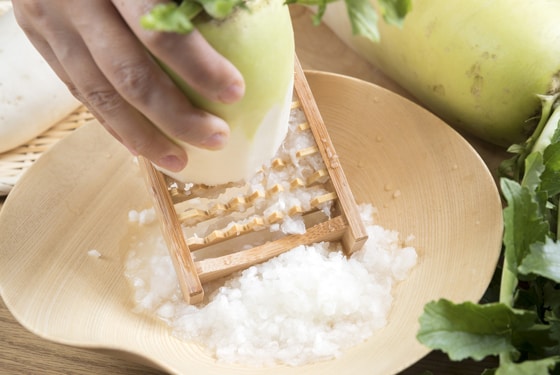
Caution
Take care when grating to avoid injuring your fingers, particularly with metal graters that tend to be sharper. Also, wash the grater with water immediately after using it to avoid fibers drying and sticking to the grater.
Washoku Lesson
Washoku Lesson is special content offering detailed and easy-to-understand explanations, including tips for making classic Japanese dishes as well as the many ways of enjoying these, and introductions to special Japanese cooking utensils and annual events .




 20 minutes
20 minutes 463kcal
463kcal 0.7g
0.7g